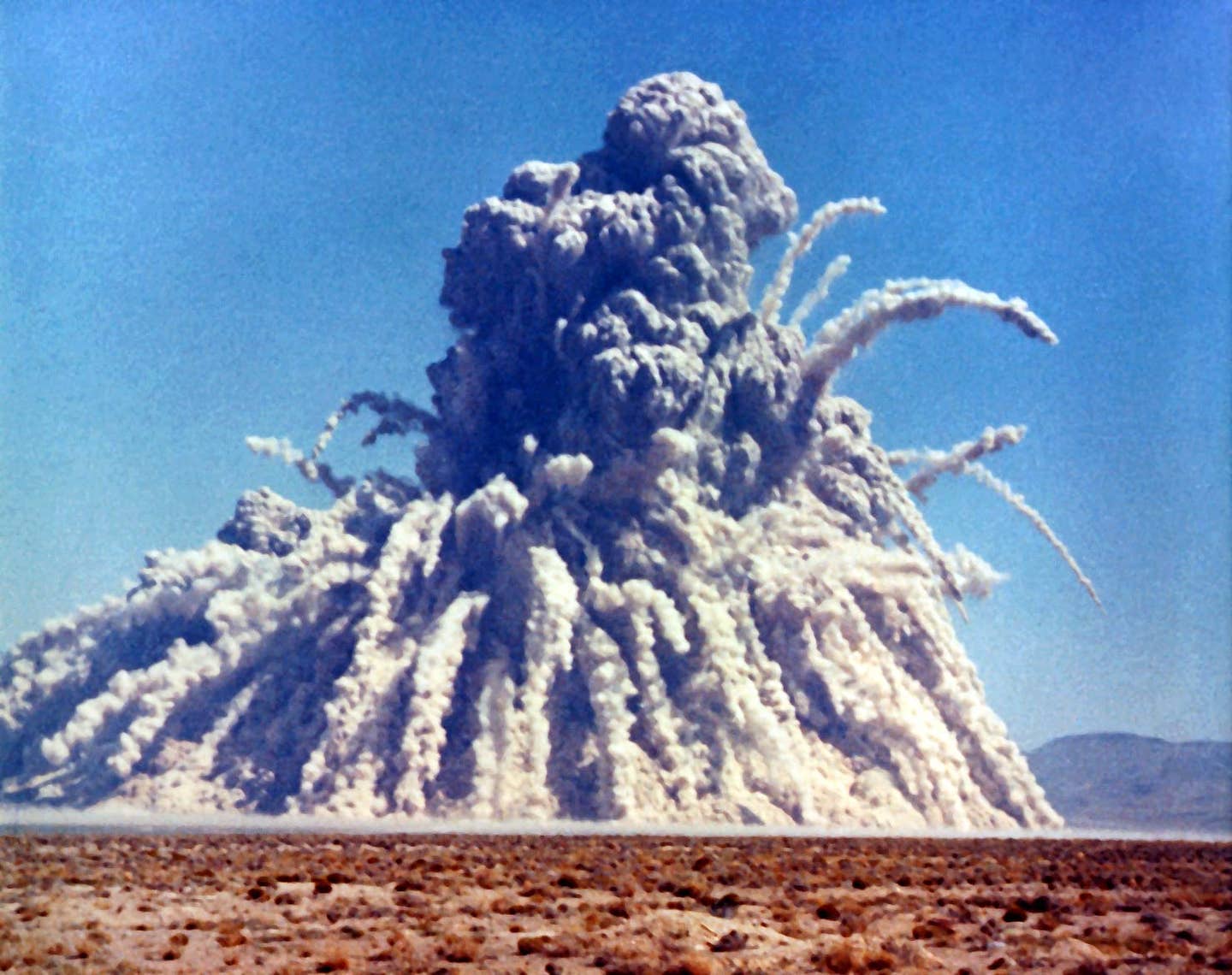Scientists can now detect underground weapon tests with 99% accuracy
The science problem becomes how do we tell the difference between an underground nuclear explosion and a naturally-occurring earthquake

Storax Sedan shallow underground nuclear test by the United States, used for a cratering experiment. 6 July 1962 (GMT), Nevada Test Site Yield: 104 kt. The main purpose of the detonation was to asses the non military dimension of a nuclear explosion. (CREDIT: Creative Commons)
A "groundbreaking" scientific advancement may soon put an end to clandestine underground nuclear tests, offering a ray of hope in global efforts towards nuclear non-proliferation.
Earth scientists and statisticians have announced a significant leap in their ability to distinguish nuclear explosions from other seismic activities with an impressive accuracy rate of 99 percent, as reported in a study recently published in Geophysical Journal International.
Lead author Dr. Mark Hoggard from The Australian National University (ANU) explains the challenge they faced: "The explosion goes off and you have all this energy that radiates out, which can be measured on seismometers. So, the science problem becomes how do we tell the difference between that and a naturally-occurring earthquake?"
This dilemma was underscored seven years ago when existing methods failed to confirm North Korea's underground nuclear test.
Related Stories
Despite North Korea being the sole nation to conduct an underground nuclear test in the 21st century, concerns have arisen over recent satellite observations indicating renewed activity at nuclear test sites in Russia, the US, and China.
While there's no indication of plans to resume testing from these major powers, geopolitical tensions, like the war in Ukraine, add uncertainty to the global security landscape.
Dr. Hoggard underscores the significance of their findings: "By using some revised mathematics and more advanced statistical treatment, we have managed to improve the classification success rate from 82 percent to 99 percent for a series of 140 known explosions in the US." The method, developed through analyzing seismic data from Nevada's extensive nuclear testing history, has also successfully identified North Korea's clandestine tests.
Acknowledging the potential for surreptitious testing elsewhere, Dr. Hoggard emphasizes the importance of effective monitoring methods. Their approach, utilizing standard seismic data and advanced statistical analysis, offers a swift and reliable means for real-time monitoring.
The research, conducted collaboratively between ANU and the Los Alamos government research lab, introduces a mathematical model that discerns subtle physical differences in rock deformation patterns between nuclear explosions and earthquakes. This model, which enhances the capabilities of organizations like the Comprehensive Nuclear-Test-Ban Treaty Organization (CTBTO), could significantly bolster international surveillance efforts.
Seismic moment tensor catalogues projected onto the fundamental lune of Tape & Tape (2012). (CREDIT: Geophysical Journal International)
Since the Cuban Missile Crisis and the Partial Nuclear Test Ban Treaty in the 1960s, international focus has shifted towards monitoring seismic activity to enforce the ban on surface and underwater nuclear tests. However, distinguishing nuclear explosions from other seismic events has remained a challenge.
Dr. Hoggard believes their model could become a valuable tool for CTBTO, aiding in the detection of clandestine tests. He stresses its importance in holding governments accountable for the environmental and societal repercussions of nuclear weapons testing.
Histograms of e^1i for each of the event catalogues. (a) 23 explosions from Ford et al. (2020). (b) 140 explosions from Pasyanos & Chiang (2021). (c) 140 synthetic moment tensors generated by sampling a uniform distribution on S^5. (d)–(f) Equivalent for earthquakes. Bin width in all histograms is 0.02. (CREDIT: Geophysical Journal International)
With the publication of their paper titled 'Seismic moment tensor classification using elliptical distribution functions on the hypersphere', these scientists offer a beacon of hope in the ongoing quest for global nuclear disarmament.
Through innovative scientific methodologies, they strive to ensure a safer and more secure world for generations to come.
Note: Materials provided above by The Brighter Side of News. Content may be edited for style and length.
Like these kind of feel good stories? Get the Brighter Side of News' newsletter.
Joshua Shavit
Science & Technology Writer | AI and Robotics Reporter
Joshua Shavit is a Los Angeles-based science and technology writer with a passion for exploring the breakthroughs shaping the future. As a contributor to The Brighter Side of News, he focuses on positive and transformative advancements in AI, technology, physics, engineering, robotics and space science. Joshua is currently working towards a Bachelor of Science in Business Administration at the University of California, Berkeley. He combines his academic background with a talent for storytelling, making complex scientific discoveries engaging and accessible. His work highlights the innovators behind the ideas, bringing readers closer to the people driving progress.



